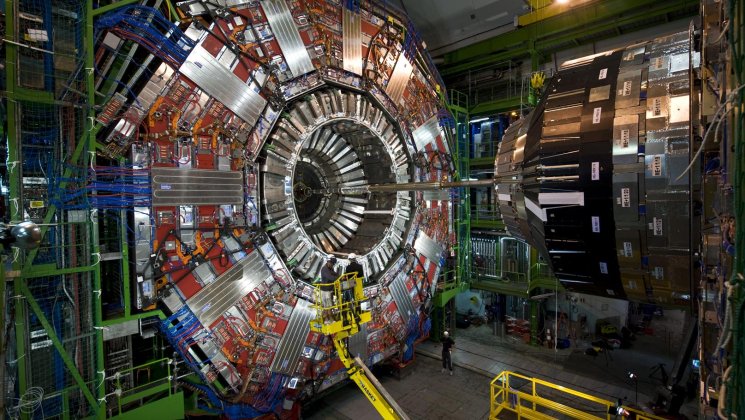-
Faculty of Arts and HumanitiesDean's Office, Faculty of Arts and HumanitiesJakobi 2, r 116-121 51005 Tartu linn, Tartu linn, Tartumaa EST0Institute of History and ArchaeologyJakobi 2 51005 Tartu linn, Tartu linn, Tartumaa EST0Institute of Estonian and General LinguisticsJakobi 2, IV korrus 51005 Tartu linn, Tartu linn, Tartumaa ESTInstitute of Philosophy and SemioticsJakobi 2, III korrus, ruumid 302-337 51005 Tartu linn, Tartu linn, Tartumaa EST0Institute of Cultural ResearchÜlikooli 16 51003 Tartu linn, Tartu linn, Tartumaa EST0Institute of Foreign Languages and CulturesLossi 3 51003 Tartu linn, Tartu linn, Tartumaa EST0School of Theology and Religious StudiesÜlikooli 18 50090 Tartu linn, Tartu linn, Tartumaa EST0Viljandi Culture AcademyPosti 1 71004 Viljandi linn, Viljandimaa EST0Professors emeritus, Faculty of Arts and Humanities0Associate Professors emeritus, Faculty of Arts and Humanities0Faculty of Social SciencesDean's Office, Faculty of Social SciencesLossi 36 51003 Tartu linn, Tartu linn, Tartumaa EST0Institute of EducationJakobi 5 51005 Tartu linn, Tartu linn, Tartumaa EST0Johan Skytte Institute of Political StudiesLossi 36, ruum 301 51003 Tartu linn, Tartu linn, Tartumaa EST0School of Economics and Business AdministrationNarva mnt 18 51009 Tartu linn, Tartu linn, Tartumaa EST0Institute of PsychologyNäituse 2 50409 Tartu linn, Tartu linn, Tartumaa EST0School of LawNäituse 20 - 324 50409 Tartu linn, Tartu linn, Tartumaa EST0Institute of Social StudiesLossi 36 51003 Tartu linn, Tartu linn, Tartumaa EST0Narva CollegeRaekoja plats 2 20307 Narva linn, Ida-Virumaa EST0Pärnu CollegeRingi 35 80012 Pärnu linn, Pärnu linn, Pärnumaa EST0Professors emeritus, Faculty of Social Sciences0associate Professors emeritus, Faculty of Social Sciences0Faculty of MedicineDean's Office, Faculty of MedicineRavila 19 50411 Tartu linn, Tartu linn, Tartumaa ESTInstitute of Biomedicine and Translational MedicineBiomeedikum, Ravila 19 50411 Tartu linn, Tartu linn, Tartumaa ESTInstitute of PharmacyNooruse 1 50411 Tartu linn, Tartu linn, Tartumaa ESTInstitute of DentistryL. Puusepa 1a 50406 Tartu linn, Tartu linn, Tartumaa ESTInstitute of Clinical MedicineL. Puusepa 8 50406 Tartu linn, Tartu linn, Tartumaa ESTInstitute of Family Medicine and Public HealthRavila 19 50411 Tartu linn, Tartu linn, Tartumaa ESTInstitute of Sport Sciences and PhysiotherapyUjula 4 51008 Tartu linn, Tartu linn, Tartumaa ESTprofessors emeritus, Faculty of Medicine0associate Professors emeritus, Faculty of Medicine0Faculty of Science and TechnologyDean's Office, Faculty of Science and TechnologyVanemuise 46 - 208 51003 Tartu linn, Tartu linn, Tartumaa ESTInstitute of Computer ScienceNarva mnt 18 51009 Tartu linn, Tartu linn, Tartumaa ESTInstitute of GenomicsRiia 23b/2 51010 Tartu linn, Tartu linn, Tartumaa ESTEstonian Marine Institute0Institute of PhysicsInstitute of ChemistryRavila 14a 50411 Tartu linn, Tartu linn, Tartumaa ESTInstitute of Mathematics and StatisticsNarva mnt 18 51009 Tartu linn, Tartu linn, Tartumaa EST0Institute of Molecular and Cell BiologyRiia 23, 23b - 134 51010 Tartu linn, Tartu linn, Tartumaa ESTTartu ObservatoryObservatooriumi 1 61602 Tõravere alevik, Nõo vald, Tartumaa EST0Institute of TechnologyNooruse 1 50411 Tartu linn, Tartu linn, Tartumaa ESTInstitute of Ecology and Earth SciencesJ. Liivi tn 2 50409 Tartu linn, Tartu linn, Tartumaa ESTprofessors emeritus, Faculty of Science and Technology0associate Professors emeritus, Faculty of Science and Technology0Area of Academic SecretaryHuman Resources OfficeÜlikooli 18, ruumid 302 ja 304 50090 Tartu linn, Tartu linn, Tartumaa EST0Area of Head of FinanceFinance Office0Area of Director of AdministrationInformation Technology Office0Administrative OfficeÜlikooli 17 (III korrus) 51005 Tartu linn, Tartu linn, Tartumaa EST0Estates Office0Marketing and Communication OfficeÜlikooli 18, ruumid 102, 104, 209, 210 50090 Tartu linn, Tartu linn, Tartumaa EST0Area of RectorRector's Strategy OfficeInternal Audit OfficeArea of Vice Rector for Academic AffairsOffice of Academic AffairsUniversity of Tartu Youth AcademyUppsala 10 51003 Tartu linn, Tartu linn, Tartumaa ESTStudent Union OfficeÜlikooli 18b 51005 Tartu linn, Tartu linn, Tartumaa EST0Centre for Learning and TeachingArea of Vice Rector for ResearchUniversity of Tartu LibraryW. Struve 1 50091 Tartu linn, Tartu linn, Tartumaa ESTGrant OfficeArea of Vice Rector for DevelopmentCentre for Entrepreneurship and InnovationNarva mnt 18 51009 Tartu linn, Tartu linn, Tartumaa EST0University of Tartu Natural History Museum and Botanical GardenVanemuise 46 51003 Tartu linn, Tartu linn, Tartumaa EST0International Cooperation and Protocol Office0University of Tartu MuseumLossi 25 51003 Tartu linn, Tartu linn, Tartumaa EST0
Tartu becomes the centre of a space mission at the end of April
In 2029, the European Space Agency's Ariel mission will take place, with contributions from scientists at the University of Tartu in its preparation and execution. Ariel is the first space telescope designed to study the atmospheres of thousands of exoplanets to understand their formation and analyse potential conditions suitable for life. From April 23 to 26, scientists and engineers from the Ariel consortium will gather for a conference in Tartu.
The study of exoplanets, which are planets beyond our solar system, is crucial for placing our life on Earth in a broader context. Understanding how other planetary systems form and evolve allows us to better comprehend the history and evolution of our own solar system. Researching exoplanets enables scientists to search for signs of life beyond our solar system and conditions suitable for life, thereby enhancing our understanding of the spread and diversity of life in the universe.
Leading researchers and engineers in the space field will discuss mission preparation, technical tasks, and scientific questions at the conference in Tartu. Additionally, the Tartu Observatory and companies in the field will provide an overview of Estonia's activities and capabilities in space technology.
Estonians help select targets for observation.
To ensure the success of the mission, suitable stars and planets must be chosen for investigation. Astrophysicists at the Tartu Observatory conduct preliminary studies to determine the main parameters of planet-hosting stars and their chemical composition. According to astrophysics researcher Heleri Ramler, determining the physical properties of the host star allows for the reconstruction of the planet's formation history and characteristics: "Know the star, know the planet. Additionally, measuring the physical parameters of all host stars with the same method ensures the accuracy and consistency of exoplanet atmosphere studies," said Ramler.
Tartu Observatory is helping to prepare the schedule for planet observations.
Since the transit midpoint of an exoplanet can change due to influences from other planets in the system, numerous star systems must be monitored throughout the entire Ariel mission. Telescopes worldwide, including those in Tõravere, are utilised, and amateur astronomers are involved.
The European Space Agency officially confirmed the Ariel mission in 2020. During the mission, efforts are made to find answers to questions such as how planets form, their internal structure, and the chemical composition of their atmospheres. Currently, work is underway on building prototypes of the telescope's components.
The conference in Tartu is intended for members of the Ariel consortium, but everyone is welcome to attend the public science evening on April 23 at 7 p.m. at Jakobi Jalats (Tähe 29, Tartu). NASA scientists David R. Ciardi (NASA Exoplanet Science Institute) and Douglas M. Hudgins (NASA Ames Research Centre) will discuss breakthrough discoveries in exoplanet research and the search for potential habitats in space.
Read more on ERR Novaator (in Estonian).
The conference is supported by the city of Tartu and the Estonian Research Council as part of the "ESA Estonian Science Consortium" project.
Conditions for applying for Estonian Doctoral School mobility grant for doctoral students in faculty of Science and Technology

Estonia’s full CERN membership expands University of Tartu’s research collaboration opportunities

